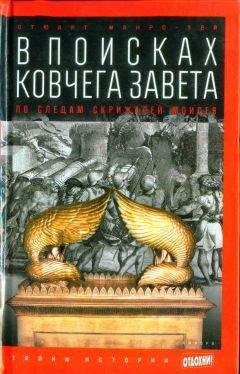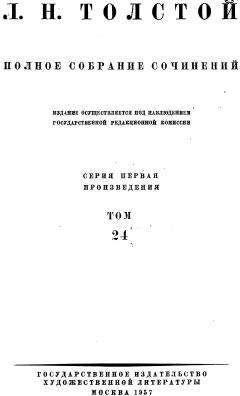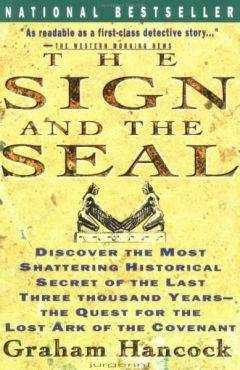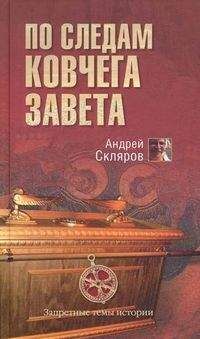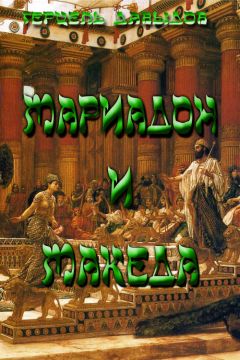Примечания
Hancock G. The Sign and The Seal. L.: Mandarin, L993. P. 515.
Grierson R. Munro-Hay S. The Ark of the Covenant. L., 1999.
Conti Rossini C. Liber Axumae. Corpus Scriptorum Christianorum Orientalium, Scriptores aethiopici, series altera. 1909. T. VIII. P. 81.
Эбна Лахаким означает "сын мудреца", т. е. Соломона. Это арабское имя, происходящее от выражения "ибн аль-хаким", дало повод Рене Бассету утверждать, что "легенда о царице Савской является иностранным влиянием". Basset R. Etudes sur l’Histoire d’Ethiopie //Journal Asiatique. Ser. 7,17. 1881. P. 414.
Это может происходить от искажения слова melek, "царь". Hubbard D. A. The Literary Sources of KN, presented to University of St. Andrew, 1956. P. 331.
Здесь и в дальнейшем ссылки на Кебра Нагаст указаны в скобках, где цифрой обозначен номер главы.
Царица Хендакия (Кандакия — титул, а не личное имя) правила Мероэ, в современном Судане, который в древности называли Кушем или Эфиопией. Ее казначей-евнух, несколько тысяч лег спустя после Соломона, был обращен в христианство апостолом Филиппом. Эфиопы заявляют, что, таким образом, их страна самая древняя христианская страна, хотя Кандакия жила в другой Эфиопии.
"Сион" зачастую употреблялся как магическое слово силы. Выражение girma Seyon, "величие Сиона", часто встречается в эфиопских магических трактатах, так же как ebna Seyon, "камень Сиона": "камень Сиона, камень помощи… сделай меня похожим силой на льва и медведя". Griaule М. Le livre de recette d’un dabtara abyssin. Paris, 1930. P. 38–39,44-45.
Josephus. Antiquities of the Jews. VIII. 5–6.
Aziz S. Atiya, et al., eds., Sawirus ibn al-Mukaffa. History of the Patriarchs of the Egyptian Church. II. P. 118–120.
Abu Salih. The Churches and Monasteries of Egypt and some neighboring countries. Oxford, 1895.
Hubbard D. A. Op. cit.
Hancock G. Keeper of Genesis: A Quest for the Hidden Legacy of Mankind. L., 1996.
Wright W. Catalogue of the Ethiopian Manuscripts in the British Museum acquired since the year 1847. L., 1877.
Coptic Encyclopedia, 1996. Vol. 4. P. 1064–1065.
Walker С. H. The Abyssinian at Home. L., 1933. P. VIII.
Kessler D. The Falashas. London, Portland, Oregon, 1996. P. 72.
Kefyalew Merahi. The Covenant of Holy Mary Zion with Ethiopia. Addis Ababa, 1997. P. 14.
Wondmagegnehu A., Motovu J. The Ethiopian Orthodox Church. Addis Ababa, 1970. P. 46, 48,152.
Ullendorff E. Ethiopia and the Bible. Oxford University Press. 1968. P. 85.
Рецензия Максима Родинсона на книгу Уллендорфа // Biblioteca Orientalis. XXI. 1964. P. 243.
Личное замечание Р. Гриерсона.
Ullendorff E. Op. cit. P. 82.
Heldman M. Architectural symbolism, sacred geography and the Ethiopian church //Journal of Religion in Africa. XXII. 3.1992. P. 237.
Alvares F. Ho Preste Joâo das Indias. Lisboa, 1540. P. 151.
Lefevre R. Documenti e notizie su Tasfa Seyon // Rassegna di Studi Etiopici. 24.1960–1970. P. 74–133.
Haile G. A History of Tabot of Atronesa Maryam in Amhara (Ethiopia) / Paideuma. 34.1988. P. 13.
Perruchon J. Les chronique de Zar’a Yâ’eqôb et de Ba’eda Mâryâm, rois d’Éthiopie de 1434 à 1478 (Bibliothèque de l'École Pratique des Hautes Études, Sciences philologiques et historiques, facs. 93). Paris, 1893. P. 81.
The Teaching of the Abyssinian Church as set forth by the Doctors of the Same, translated by the Rev. A. F. Matthew with an Introduction by Canon J. A. Douglas. L., 1936.
Keftalew Merahi. Op. cit. P. 13–14.
Pétridès S. P. Le Livre d’Or de la Dynastie Salomonienne d’Ethiopie. Paris, 1964. P. 207.
Bruce J. Travels to Discover the Source of the Nile. Edinburgh, 1805. Vol. II. P. 399.
Mathew D. Ethiopia: The Study of the Polity 1540–1935. L., 1947. P. 12.
Kefyalew Merahi. Op. cit. P. 12.
Contenson H. de ’Les fouilles à Aksoum en 1958. Rapport préliminaire // Annales d’Ethiopie. 5.1963. Pis. I–II.
Exhibition catalogue, Musée nationale des arts d'Afrique et d’Océanie. 20 Oct. 1992 — 25 Jan. 1993.
Kefyalew Merahi. Op. cit. P. 10–11.
Heldman M. "The Zagwe Dynasty" in African Zion: The Sacred Art of Ethiopia. New Haven and London, 1993. P. 71.
Adolf H. New light on Oriental sources for Wolfram’s "Parzifal" and other grail romances / Publications of the Modern Language Association of America. XLII. Menasha, Wisconsin. 1947. P. 306–324.
Mallinson A. The Leaning Tower, or Out of the Perpendicular. Oxford, 1982. P. 18.
Schneider R. Les Actes d’Abba Afsé de Yeha // Annales d’Ethiopie. 13.1985. P. 105–118.
Guidi I. Il’Gadla’ Aragâwi // Atti della R. Accademia dei Lincei. Ser. 5. Vol. 2.1874. Rome, 1876. P. 92.
Conti Rossini С. L’Omilia di Yohannes, vescovo d’Aksum, in onore di Garima // Actes du Xle Congrès Int. des Orient. Paris. 1897. P. 154–155, lines 163–164.
Conti Rossini С., ed. Acta Yared et Pantalewon // Corpus Scriptorum Christianorum Orientalium, Scriptores aethiopici, Series altera. T. XVII. Vitae Sanctorum Antiqourum. I. Rome, Paris, Leipzig, 1904. P. 4–5, 7.
Guidi I. Storia della letteratura etiopica, 1932. P. 61.
Conti Rossini С., ed. Acta Yared… P. 40.
Boorstin D.J. The Discoverers. NY, 1985. P. 109.
Rodinson M. Sur le question des "influences juives" en Ethiopie //Journal of Semitic Studies. IX. 1.1964. P. 19.
Bêlai Giday. Ethiopian Civilization. Addis Ababa, 1992. Р. 134.
Caqout A. Les "Chroniques abrégées" d’Ethiopie //Annales d’Ethiopie. 2.1957. P. 191.
Taddesse Tamrat. Church and State. P. 189.
Hubbard D. A. Op. cit. P. 347.
Erman A. Bruchstücke koptischer Volkslitteratur //Abhandlungen der Kônigliche Preuss. Akademie der Wissenschaften zu Berlin, 1897. P. 3–64 (Ein Mâhrchen von Salomo, 23–26).
Conybeare F. С. //Jewish Quarterly Review. October, 1898.
Hubbard D. A. Op. cit. P. 201.
Hancock G. Op. cit. P. 128–129,158.
Munro-Hay S. Ethiopia and Alexandria. Warsaw, Wiesbaden, 1997. Ch. 52. P. 179.
Abu Salih. The Churches and Monasteries of Egypt… Fols. 105a-107a.
Budge E. The Queen of Sheba and her only San Menyelek (I). L., 1922. P. 228–229.
Conti Rossini C. L’Evangelo d’Oro di Dabra Libanos // Rendiconti della Reale Accademia dei Lincei, Classe di Scienze Morali, Storiche e Filologiche. Ser. 5. Vol. 10. 1901. P. 190. Document 7.
Conti Rossini C. Gli Atti di Re Na’akueto La-'Ab’. P. 230, 233. Taddesse Tamrat. Church and State. P. 64.
The Chronography of Gregory abü'l Faraj, the son of Aaron, the Hebrew Physician, commonly known as Bar Hebraeus, being the First Part of his Political History of the World, translated from the Syriac by E. A. W. Budge. L.. 1932. Vol. I. P. 26.
Conti Rossini C. L’Evangelo d’Oro… P. 200. Document 17.
Hubbard D. A. Op. cit. P. 360.
Levine D. Greater Ethiopia: The Evolution of a Multiethnic Society. Chicago, London, 1974. P. 111.
Чернецов С. Богатства и почести эфиопских царей. Неопубликованная работа. С. 10. Цит. по: Kropp M. Zur Deutung des Titels "Kebra nâgâst" // Oriens Christianus. 80. 1996. P. 112.
Levine D. Op. cit. P. 111.
Caquot A. La royauté sacrale en Ethiopie // Annales d’Ethiopie. 2.1957. P. 211.
Abu Salih. The Churches and Monasteries of Egypt… P. 286–287.
Marrassini Р. Il Gadla Yemrehanna Krestos, Supplemento n. 85 agli Annali (Istituto Universitario Orientale, Napoli), vol. 55, fasc. 4. Naples, 1995. P. 69.
Чернецов С. Указ. соч. С. 112.
Conti Rossini С. Liber Axumae. P. 81.
Perruchon J. (trans.) Les Chroniques de Zar’a Yâ’eqôb et de Ba’eda Mâryâm, rois d’Éthiopie de 1434 à 1478. Paris, 1893. P. 49–50,83.
Doresse J. L’Empire du Pretre-Jean. Paris, 1957. P. 128.
Varenbergh J. Studien zür abessinischen Reichsordnung (Ser’ata Mangest) // Zeitschrift fur Assyriologie, 30,1915–1916. P. 1–45.
Conti Rossini С. Historia Regis Sarsa Dengel (Malak Sagad), Corpus Scriptorum Christianorum Orientalium. scriptores aethiopici, series altera. T. III. Paris, 1907. P. 89–91.
Pais P. Historia de Etiopia. 3 vols. Porto, 1945–1946. P. 115–121.
Guidi I. Annales Iohannis I, Iyasu I, Bakaffa, text — p. 110; trans. - p. 113–114.
Ibid.: text, p. 162–163: trans., p. 170.
Marrassini P., ed. and trans., Gadla Yohannes Mesraqawi, Vita di Yohannes l’Orientale. Florence, 1981. P. 15.
Budge E. A. W. The Contendings of the Apostles. L., 1935. P. 425–433.
Ullendorff E. Ethiopia and the Bible. P. 75.
Le Voyage d’Andre Corsai // Alvarez F. Historiale description de l’Ethiopie. Antwerpen, 1558. P. 18–26.
Ethiopian Itineraries circa 1400–1524. Cambridge. 1958. P. 139, 167,189–191.
